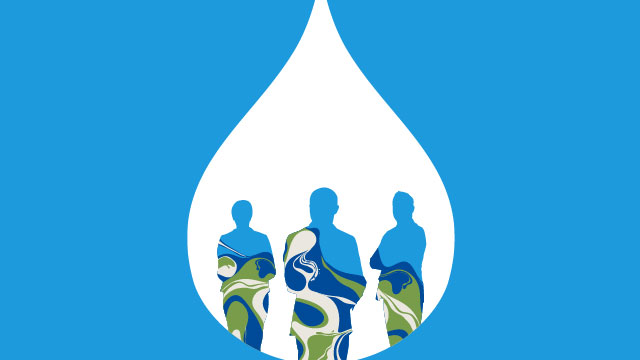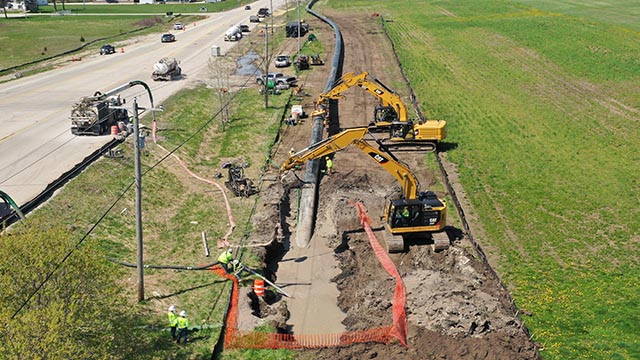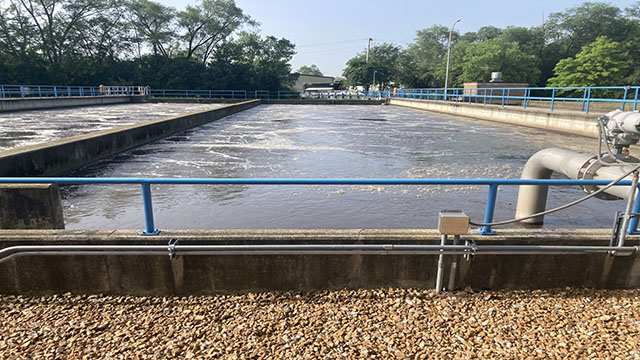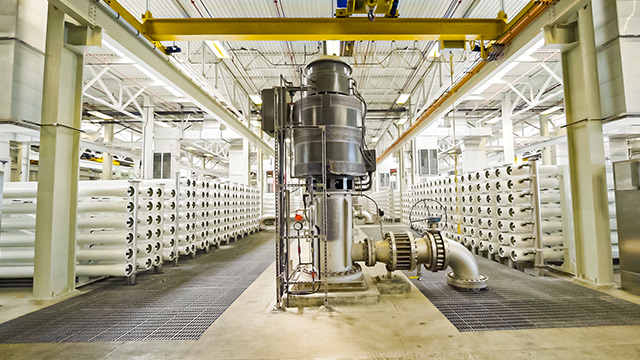Per- and polyfluoroalkyl substances (PFAS), also known as “forever chemicals,”, take decades to break down in the environment and now are associated with many health problems such as thyroid disease, high cholesterol, low birth weight and increased cancer risk. The discovery of these health issues has led to intense scrutiny of PFAS and regulation at the local, state and federal level. In March 2023, the U.S. Environmental Protection Agency (EPA) released their proposed National Primary Drinking Water Regulation for PFAS, which is expected to be finalized at the end of 2023. In preparation, many utilities have begun monitoring the presence of the six identified PFAS, evaluating the costs of treatment options, accounting for those upgrades in their capital improvements budgets, and applying for federal funding as needed.
Water utilities already are facing the logistical challenges and associated costs of replacing lead pipes, upgrading aging infrastructure and modernizing treatment facilities. On top of all that, they soon will be required to engineer, construct and integrate advanced PFAS mitigation systems into their existing infrastructure. When putting these upgrade projects out to bid, water utilities have various options for contract types. Quickly growing in popularity for public infrastructure projects, design-build is an alternative delivery method in which design and construction services are contracted through a single entity known as the design-builder. Here’s three reasons why water utilities should consider the progressive design-build delivery method for PFAS mitigation projects:
1. Incentivizes collaboration and optimizes schedules
Water utilities and their key stakeholders experience a more streamlined process by interfacing with a single point of responsibility (the design-builder) rather than multiple separate engineers and contractors. Design-builders are financially incentivized to deliver a project that performs within the contract parameters. Since their team will be taking the solution from conception to reality, it’s in the design-builder’s best interest to develop a high-performing, constructable design. With an integrated design-build firm, having a “skin in the game” establishes a culture of collaboration and accountability.
According to the EPA, there are three available treatment technologies that are considered scalable and effective for removing PFAS from drinking water: activated carbon, ion exchange resins and high-pressure membrane systems. Partnering with an expert design-build team helps water utilities determine the best treatment process and applicable technologies for their unique situations. In contrast to the traditional design-bid-build delivery method, design-build is more flexible and provides opportunities to have the firm responsible for pilot testing different solutions during the design phase also be responsible for implementation and execution during the construction phase
The three-year deadline to comply with the EPA’s new rule will approach quickly; fortunately, design-build allows teams to work efficiently in time-sensitive situations. With the engineers and construction professionals in the same room from the beginning of the project, feedback is addressed in real-time, long-lead items are procured early, constructability issues are identified before they arise in the field, and design and construction activities happen concurrently to optimize the project schedule.
2. Reduces risk and liability for water utilities
When it comes to construction, “risk” refers to anything that could negatively impact the project such as safety hazards, poorly defined scope or contracts, procurement issues, unforeseen site conditions, unexpected material or labor price spikes, extreme weather events and ineffective project management. For example, in the case of PFAS projects, material disposal costs may be much higher than originally budgeted for; by identifying this financial risk ahead of time, best practices can be implemented to separate materials requiring special handling.
Design-build contracts aim to have risks, risk ownership, contingencies and pricing identified as early as possible, outlining clear financial consequences for breaking this agreement. Reputation management is a risk often associated with PFAS projects, and therefore public relations are an important element of effective risk ownership. Successful construction risk management requires transparent communication between the design-builder, water utility and other project stakeholders. The design-build delivery method facilitates this kind of collaboration; with frequent stakeholder meetings established from project conception, risks can be identified early and appropriately allocated to the responsible party before anyone is met with surprises.
Traditional delivery methods that make use of multiple contracts limit opportunities to transfer risk, so most liability falls on the water utility, but ideally risk should be allocated to the entity best able to manage that risk. For example, on a design-bid-build project, the water utility is liable for any errors or omissions in the “as-bid” construction drawings; on a design-build project, the design-builder is liable for the construction drawings they developed. Deciding which risks are best managed by the design-builder or the water utility protects all parties involved.
3. Speeds up funding acquisition
By partnering with an integrated design-build firm at the beginning of the project planning process, water utilities are likely to benefit from the design-builder’s in-house expertise on navigating relevant government funding resources. Taking full advantage of this federal funding — whether it’s in the form of grants, low-interest loans or tax credits — requires a holistic understanding of the wide array of options and associated requirements.
Signed into law in late 2021, the Infrastructure Investment and Jobs Act (IIJA) promises the U.S. water industry tens of billions of dollars to address chronically aging infrastructure. More than $10 billion from the IIJA is specifically allotted for addressing emerging contaminants, including PFAS. As a part of the IIJA, the Buy America, Build America (BABA) Act requires that any infrastructure project receiving federal funding as of May 2022 must procure iron, steel, manufactured products and construction materials from within the United States. Since the design-build delivery method enables early procurement, teams have an easier time complying with BABA by getting ahead of supply chain and market pricing obstacles.
Since design-build teams are able to mobilize sooner, their clients are positioned to secure funding earlier. The design-build delivery method also enables cost certainty earlier in project development, so water utilities have a much better idea of the number they are targeting when seeking funding. This also minimizes the likelihood of having to seek a costly and burdensome loan or grant amendment. Water utilities should consider seeking a trusted design-build partner that can advise them through all phases of their PFAS projects, starting with identifying applicable funding and navigating how to tap into these opportunities.
The progressive design-build delivery method fosters collaboration between owners and design-builders to compare options, choose materials, accurately estimate costs, optimize schedules and ultimately develop the highest-value solutions. It also speeds up the bidding, design and construction phases, which is especially beneficial when working to meet regulatory deadlines and secure federal funding. Black & Veatch helps water utilities around the country address their contamination challenges with our end-to-end consulting, engineering, procurement and construction expertise. We’re at the forefront of innovative PFAS solutions to mitigate the effects of the contaminants on the environment, critical infrastructure, and human health. Most recently, we leveraged our project delivery expertise to decontaminate the Cape Fear Public Utility Authority’s drinking water supply by implementing a new granular activated carbon contactor facility. Don’t wait as the deadline to comply with the EPA’s National Primary Drinking Water Regulation for PFAS quickly approaches.








